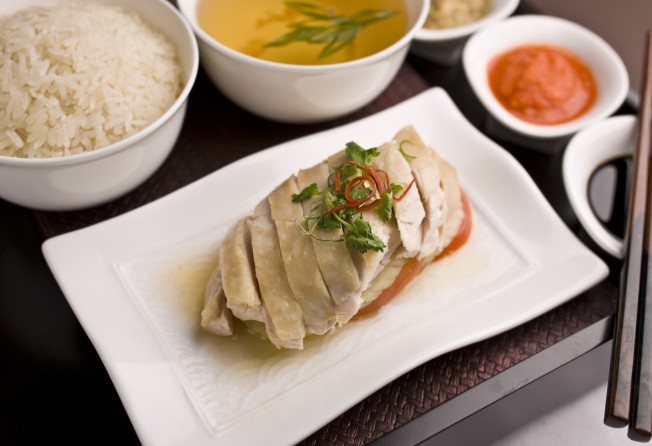
Chicken, the ‘fowl of five virtues’ in Chinese lore, and why Singapore got into a flap over a shortage of the birds
- In Singapore, where chicken rice is almost a national dish thanks to 20th century immigrants from China, the suspension of live poultry imports caused a shock
- The chicken was domesticated thousands of years ago in China, where it was hailed for its benevolence, faithfulness, courage, fighting spirit and literary flair

Following Malaysia’s ban on chicken exports that began on June 1, yet another example of the worrying rise in food protectionism around the world, the people of Singapore were for a time starved of fresh chickens because the island nation imports almost all its live chickens from its northern neighbour.
The dearth of freshly slaughtered birds is more than amply compensated for in the abundance of frozen chickens from sources as varied as Australia, Brazil and Thailand. However, chicken aficionados – of whom I am not one, preferring bland breast meat to other, allegedly more flavoursome parts – insist that frozen chickens are inferior to fresh ones in taste and texture. Many purveyors of Hainanese chicken rice in Singapore refused to use frozen birds out of professional pride.
A word about Hainanese chicken rice, considered by many to be Singapore’s national dish. While its name pays homage to the Chinese island of Hainan, where a similar dish exists, it has become very much a part of Southeast Asian, especially Singaporean, cuisine.
With people from different parts of China living in very close quarters in port cities like Singapore in the early 20th century, Hainanese immigrants quickly learned the Cantonese method of immersing freshly poached chicken in chilled water to give more bite to the flesh. Of the several ingredients that give the boiled rice its distinctive flavour, one is ubiquitous in the region but not found or used in China: the fragrant leaves of the pandanus plant. To me, the rice is the most important aspect of Hainanese chicken rice, more so than its Hainanese provenance or the chicken itself.

The Chinese, like many other peoples in the world, have kept Gallus domesticus for thousands of years as a source of meat protein and eggs. For its utility to human existence, the ancient Chinese hailed the chicken as “the fowl of five virtues”.
A book written in the Han period (202BC – AD220) explains: “The crown worn on its head symbolises literary flair and the spur on its feet symbolises the martial spirit. By fighting its enemies head on it shows courage, by calling to other chickens when there is food shows benevolence, and by keeping vigil at night without leaving the homestead shows faithfulness.”

The sheer size, diversity and longevity of the Chinese nation have also meant that there are a host of different traditions and customs associated with the chicken. A common practice among all Chinese is the use of cooked chicken as offerings to one’s ancestors and certain deities.
This custom has its origins in ancient China, where the three beasts – the goat, cow and pig – were sacrificed to heaven, and the three types of fowl – the chicken, duck and goose – were offered to the earth. Over time, the chicken became the most common and accessible animal for many types of religious offerings.
The sudden but temporary halt in supplies of live chickens in Singapore probably had little effect on religious observances among most ethnic Chinese residents of the city state. Ancestors and gods do not seem to mind frozen chickens and they are not known to have a preference for freshly slaughtered birds. They are far less picky eaters than some humans I know.